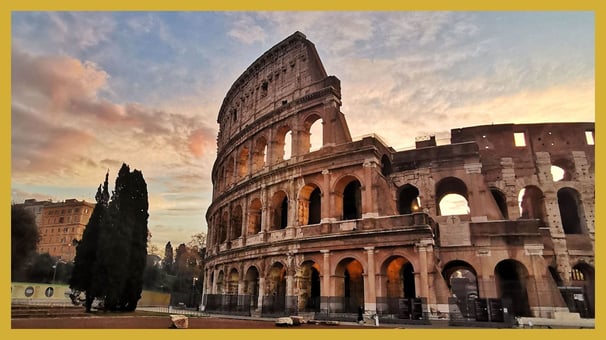Rome and the Jubilee: A Historical and Artistic Bond
Contents
The History of the Jubilee in Rome
Historical Events Associated with the Jubilee
Artistic Enrichment of Rome through the Jubilee
The Jubilee Basilicas
Pilgrimage Paths in Rome
The Influence of Baroque Art on the Jubilee
Conclusion
The Jubilee is one of the most significant events for the Catholic Church, representing a profound moment of spiritual reflection for believers worldwide. Established by Pope Boniface VIII in 1300, the Jubilee is a time for the forgiveness of sins and for reconciliation, inviting pilgrims to renew their faith and draw nearer to God. Rome, as the epicenter of Christianity, has long been the focal point of Jubilee celebrations. Throughout the ages, the Jubilees have deeply influenced the city’s history, helping shape its cultural, spiritual, and artistic identity. This article explores key historical events tied to the Jubilee and examines how they have artistically enriched Rome, making it a global focal point for faith and art.


The History of the Jubilee in Rome
The inaugural official Jubilee was declared by Pope Boniface VIII in 1300. Originally planned as a centennial event, the overwhelming influx of pilgrims and the event’s spiritual impact led to intervals being reduced first to 50 years, then to 33, and ultimately to every 25 years. This adjustment was made to keep the spiritual life of the faithful vibrant and engaged more frequently. From that point forward, the Jubilee has been a regular event marking global unity and devotion among Catholics.
A central tradition of the Jubilee is the opening of the Holy Doors at the four Major Papal Basilicas in Rome: St. Peter's, St. John Lateran, St. Mary Major, and St. Paul Outside the Walls. This act is not just symbolic but initiates a path to salvation and spiritual renewal for pilgrims. Deeply rooted in tradition, the opening of these doors during each Jubilee year draws millions from around the world, eager to partake in this solemn ritual emblematic of forgiveness and reconciliation with God.
Moreover, the Jubilee has profoundly influenced Rome itself, not just spiritually but also culturally and logistically. Each celebration requires the city to prepare for the arrival of vast numbers of pilgrims, prompting enhancements in infrastructure like roads, hospitals, accommodations, and eateries. These improvements make Rome more accessible and welcoming, ensuring that the city remains a perfect blend of religious tradition and modern amenity.
Historical Events Associated with the Jubilee
The Jubilees in Rome often align with significant historical moments for the city. For instance, under Pope Gregory XIII, the 1575 Jubilee brought a surge of pilgrims from across Europe, reinforcing Rome’s status as the heart of Christianity. This influx spurred enhancements to urban infrastructure, optimizing pilgrimage routes and the connections between primary churches. Pope Gregory XIII also commissioned the restoration and beautification of many churches, further elevating Rome as a beacon of religious devotion and a treasury of artistic heritage.
One of the most memorable Jubilees was that of 1600, celebrated by Pope Clement VIII. On this occasion, the Jubilee also presented an opportunity to reinforce the Catholic Counter-Reformation, attracting pilgrims from a Europe torn by religious wars. A variety of concrete initiatives were launched, including the reform of the clergy, the organization of missions to fortify the Catholic faith in regions most impacted by the Protestant Reformation, and the sponsorship of significant artistic and architectural endeavors to reaffirm the Church's grandeur. In particular, these efforts led to a substantial enhancement of artistic and architectural projects, including the construction of new churches and the restoration of existing ones. The roads leading to the main basilicas were upgraded, and hospices were established to accommodate pilgrims, thus demonstrating the Church of Rome's charitable and welcoming nature.
Artistic Enrichment of Rome through the Jubilee
The Jubilee is not merely a spiritual event; it has significantly impacted the artistic and architectural landscape of Rome. Each Jubilee year has been an opportunity for the city to upgrade its infrastructure and adorn places of worship with works of art. For instance, during the Jubilee of 1600, noteworthy restoration projects were initiated in the Basilica of St. John Lateran, and Bernini's majestic Baldacchino was erected in St. Peter's Basilica, symbolizing the Church's greatness and its capacity to inspire devotion through art. This has transformed Rome into a living museum under the open sky, where every corner narrates a story of faith and beauty.
Artworks commissioned during the Jubilees extended beyond the basilicas. Numerous other religious buildings and public spaces were adorned with paintings, sculptures, and frescoes, creating an atmosphere of sanctity and splendor throughout the city. St. Peter's Basilica, for example, not only featured the construction of Bernini’s Baldacchino but was also enhanced with numerous altars and side chapels, each decorated with artworks by some of the greatest artists of that era.
The Jubilee Basilicas
The four papal basilicas in Rome have been focal points of the Jubilees since their inception, undergoing continuous enhancements and restorations. St. Peter's Basilica, in particular, benefited from the contributions of renowned artists like Michelangelo, who designed the famous dome, and Gian Lorenzo Bernini, the creator of both the colonnade in the square and the Baldacchino over the main altar.
The article dedicated to the Jubilee Basilicas provides a thorough overview of these magnificent churches that are not only places of worship but also veritable art treasures. Each Jubilee has left a tangible imprint on these basilicas, rendering them increasingly rich and captivating, with decorations and works illustrating the Church's devotion and the skill of the artists involved.
Pilgrimage Paths in Rome
The ceaseless stream of pilgrims to Rome has cultivated religious paths that are now fundamental to the city's fabric. The Seven Churches Pilgrimage, popularized by Saint Philip Neri, illustrates perfectly how pilgrimage is deeply interwoven with Rome's culture and arts. This journey links seven key churches in Rome, each adorned with masterpieces by renowned artists. Dive deeper into this topic in our article dedicated to The Seven Churches Pilgrimage. Each phase of the walk offers a moment of contemplation and a profound encounter with Rome's spiritual heritage, while the churches involved safeguard art pieces that recount the spiritual narratives of Rome across the ages.
Beyond The Seven Churches Pilgrimage, numerous other pilgrimage routes evolved over the centuries to cater to pilgrims. Paths like the Via Francigena were pivotal in linking Rome with the rest of Europe, facilitating a continuous influx of devotees. The city enhanced its infrastructure, adding historical drinking fountains, shelters, and rest points to support and accommodate the pilgrims on their spiritual journeys.
The Influence of Baroque Art on the Jubilee
The Jubilee profoundly spurred the growth of Baroque art in Rome as well. Under Innocent X’s pontificate, the 1650 Jubilee marked the zenith of this artistic movement, transforming Rome into a spectacular open-air theater with the erection of breathtaking monuments and plazas. The Jubilee significantly augmented this style's popularity, with the Church commissioning numerous works to reinforce its spiritual authority through the magnificence and visual impact of the architecture and sculptures. Bernini and Borromini played key roles in Rome’s transformation, creating fountains, squares, and monuments that today shape the city's identity.
Piazza Navona, with its Fountain of the Four Rivers, stands as an iconic testament to the artistic enrichment spurred by the Jubilee. Previously a vital gathering spot for Romans, the square was reimagined into a scenographic space where the splendor of Baroque art manifests the power of the Catholic faith. The fountains, statues, and water features became emblems of the Church’s triumph and its dedication to fostering beauty and harmony. Both Borromini and Bernini, despite their rivalry, significantly sculpted the city in the Baroque style, producing captivating works that continue to enchant millions of visitors.
Explore deeper in our dedicated article on Baroque Rome.
Conclusion
The Jubilee has indelibly marked Rome, not merely spiritually but also in artistic and cultural realms. Each Jubilee celebration has enriched the city’s heritage, converting it into a veritable open-air museum. The artworks, churches, squares, and infrastructures created or restored for the Jubilees illustrate the profound connection between faith, art, and history. The forthcoming 2025 Jubilee promises yet another unique opportunity for millions of pilgrims to engage in an unparalleled spiritual and cultural revival, rediscovering the grandeur of the Eternal City.
Drop us a line
Follow us
Discover the Jubilee
Experience the Jubilee
Jubilee locations
Get ready for the Jubilee
Rome and the Jubilee
